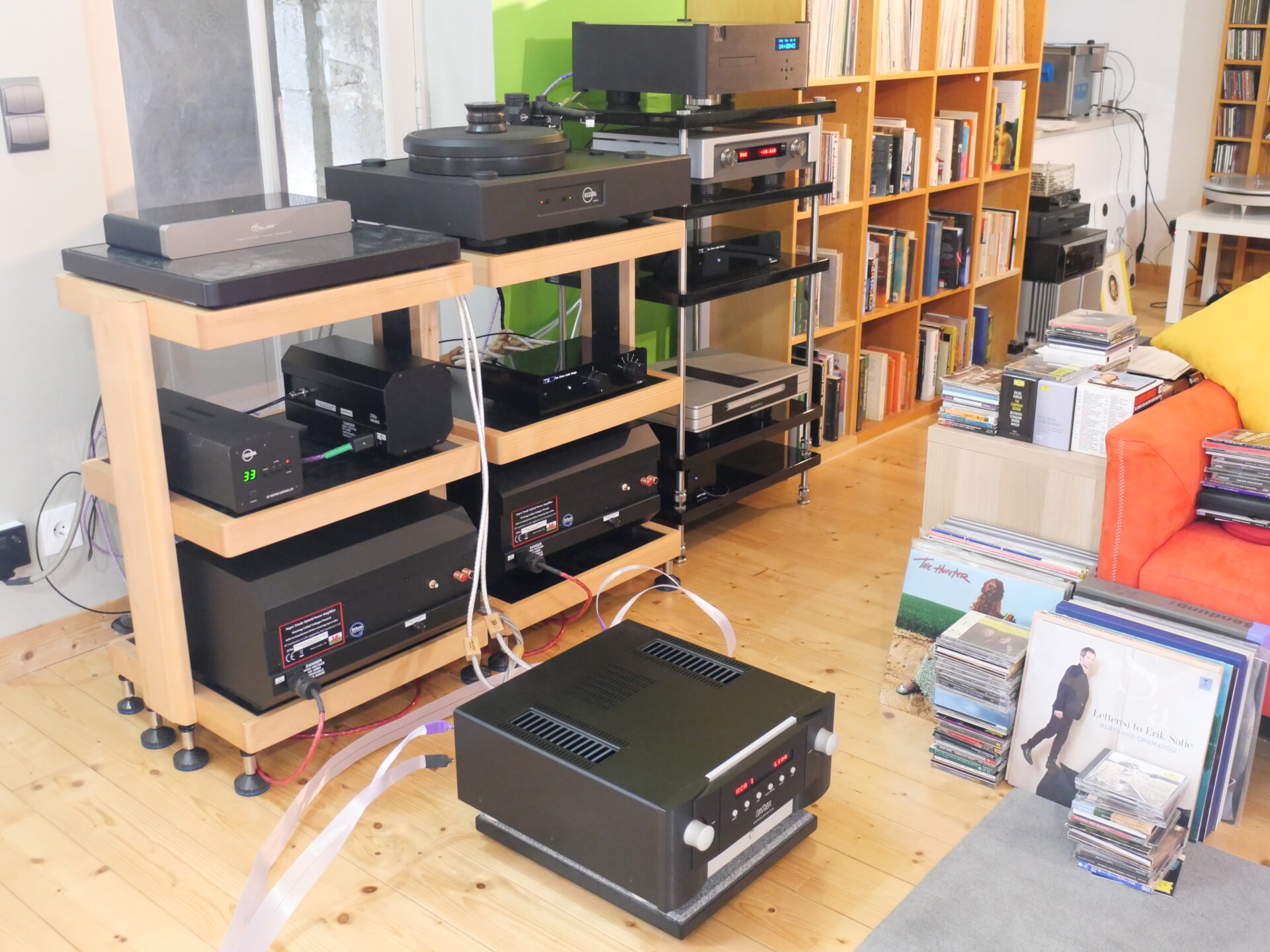With the RXR as a permanent core, I can build the Blue Horizon PRS rack components around it, as required, generally separating digital and analogue elements across the two rack types when necessary. The RXR and the special, heavy duty M3X platform provides a permanent home for the Kuzma Stabi M turntable, with the rest of the rack supporting the amplification and other electronics. When bigger systems that feature multi-box digital and amplifier set-ups demand more space, that’s when the PRS rack appears alongside the RXR and or PRS amp-stands between the speakers. I generally prefer to keep the floor between the speakers clear of equipment: it’s never, ever the best sonic or musical solution, even if it is generally the most convenient. However, sometimes and particularly when it comes to cable testing, it’s unavoidable (at least if you are going to keep cable lengths manageable) and here again, the PRS delivers the necessary flexibility.

Such multi-configurable capability is a world away from the requirements of most domestic systems, but pointing it out serves to highlight the differences between reviewer and home audio set ups. The ability to properly incorporate, assess and optimize even a single additional component within an existing system requires both significant additional infrastructure elements and an astonishing degree of diligence. If you don’t get the conditions and methodology correct then the actual difference/benefits of any component change or comparison can easily be diminished or swamped by other, situational factors. It really is incredibly difficult (and ultimately misguided to attempt) to ‘change just one thing’ – as the quasi-religious refusal to consider speaker positioning when swapping system components serves to demonstrate. What’s more, as the number of additional components multiplies, the complexity and additional elements required increase exponentially. The increased infrastructural consistency delivered by the updated racking arrangements in both the Music and Reading Rooms has proved invaluable in easing the process and (as a direct result) improving the results.
Besides replacing or redeploying the ‘furniture’, the other permanent addition to the system has been the Aardvark Ethernet filter (https://gy8.eu/review/aardvark-in-line-rj45-filter/). I’ll admit that I approached this unassuming little device with some considerable scepticism – but my suspicions were ill-founded. Plugged into the Ethernet connection on the Wadax Reference Server or the Roon Nucleus and the SOtM switch feeding them, the results were as impressive as they were instantly apparent. A number of other Ethernet filters have crossed my path before or since, although none has matched the gains in musical coherence, presence and articulation delivered by the Aardvark. Given the cost of the switches and cables in the dedicated audio network (let alone the cost of the Reference Server) this little device is a musical bargain of monumental proportions. If noise is the enemy of any high-performance audio system, then it’s kryptonite to digital replay. The Aardvark snuffles up that pesky, pervasive and intrusive infestation that pollutes digital networks with the same gusto its namesake guzzles down particularly tasty bugs, while its long, sticky tongue clearly gets to places that other filters simply don’t reach. Like any such device, its impact is going to depend on the situation and system involved, but in the systems here, the Aardvark’s contribution makes it an essential element.

